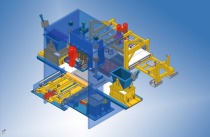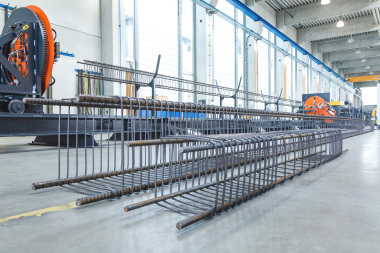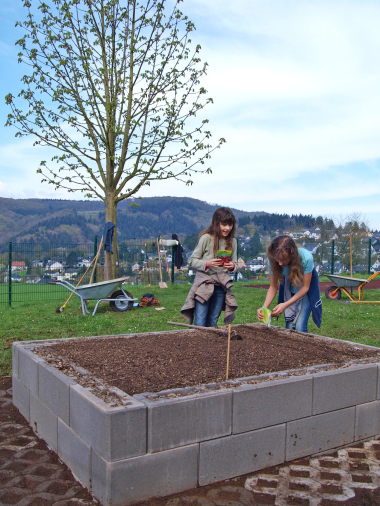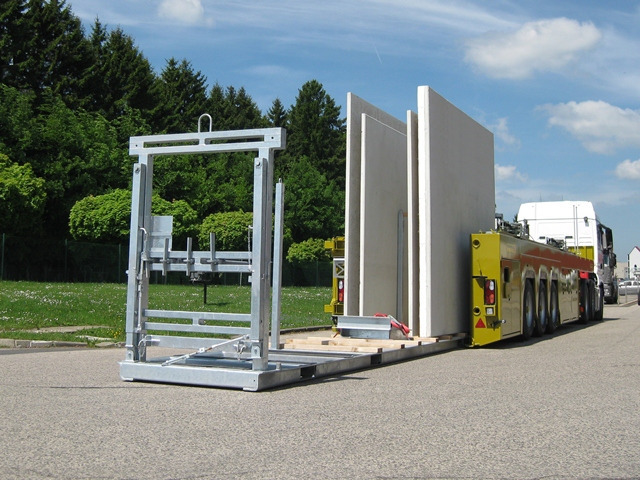Combined stacking facility
For many years now, Rimac has been further developing step by step the multifunction machinery RSM sliding bed and RTM turntable. Now, a new stacking facility is available combining on-edge stacking, flat stacking and the matrix return system.
An important characteristic of the multifunction machinery is the flexibility in height. The RTM turntable and the RSM sliding-bed machines allow optional production thicknesses of 20 to 215 mm. Heights from 4 up to 8 and 10 cm respectively are considered as standard values. Any height is set automatically by a filling level adjustment system.
Whereas the possibility of variable stacking is a worldwide unique feature. In practice, flat stacking is provided for very thin single-layer products starting from 20 mm but also for ground and polished products. Standard products starting from 40 mm and extra thick elements up to 215 mm (e.g., curbstones, split stone rough casts), on the other hand, are handled by on-edge stacking owing to economic reasons. What is new now, is the combined machine RCO which functions like a normal on-edge stacking system and places the products by means of a swivel plate on edge at the production pallet. Alternatively, the swivel plate turns by 90° and the production pallet swivels towards. Now the products can be turned over and tlayed down. In this way, it is possible to manufacture the product relatively wet (face down) and to stack it afterwards having an excellent surface quality (face up). Now, also in handling it is possible to make use of the entire potential of the machine (heights of 20 mm up to 215 mm). For even thicker products the machine can be configured to customer specification.
As an option, even a matrix return system can be integrated in the stacking unit, resulting in a wider design and product range: various matrices can be combined in a quadruple mold (e.g., 60 cm x 30 cm), for example, providing the pattern of rocks, natural stone, bricks, cobblestone, circles or a relief. The same mold might also be used for manufacturing multiform products with the aid of ma-
trices and/or striker plates as well as an adjustable height such as, for example, slabs, façades, blocks, step stones, gutter stones, curbstones, retaining wall slabs, wall copings, handrails, and palisades.
The optional feeding of paper, reinforcement or insulating material is an additional advantage of the plant providing possibilities for further product diversity.
The plants may either be furnished with a tamping unit as standard version and/or with direct vibration. The direct vibration is generally provided for the use of elastic materials (e.g. Styrofoam insert) and the production of rings, chimney blocks and the like.
From time to time, the molds used have been applied for decades and are very durable. In this respect only the wearing parts have to be exchanged when necessary, so that the costs just amount to about 30% compared to that of molds used for block making machines. The service life of the same mostly amounts to 80,000 cycles.
This kind of production process ensures very smooth surfaces, sharply defined edges, a low amount of face material and a low cement ratio as well as highest compaction. Thus, a maximum abrasion and freeze-thaw resistance is ensured too.




